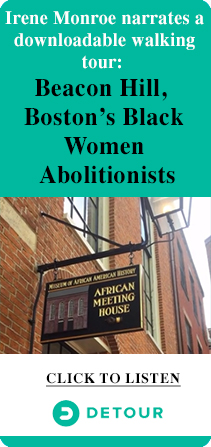But not all members of our community have crossed the finish line. Some are waving the cautionary finger that within our community not all are equal.
June is Pride Month for lesbian, gay, bisexual, transgender, and queer (LGBTQ) communities across the country — and parades abound.
While we all rev up each June for pride so, too, do the fault lines of race and class in our larger white LGBTQ community.
With advances such as hate crime laws, legalization of same-sex marriage across the country, and with homophobia viewed as a national concern, the LGBTQ movement has come a long way since the first pride march in 1969. Many laud the distance the LGBTQ community has traveled in such a short time as a disenfranchised group on the fringe of America’s mainstream to a community now embraced.
But not all members of our community have crossed the finish line. Some are waving the cautionary finger that within our community not all are equal. And pride events can be public displays of those disparities.
Cultural acceptance was just one of a few things LGBTQs of color did not experience from larger pride events. As a predominately white event, many LGBTQ of color revelers experienced social exclusion and invisibility. And, after decades of pride events where many LGBTQ people of color tried to be included and weren’t, black, Asian and Latino pride events were born.
For example, Sunday gospel brunches, Saturday night poetry slams, Friday evening fashion shows, bid whist tournaments, house parties, the smell of soul food and Caribbean cuisine, and the beautiful display of African art and clothing are just a few of the cultural markers that make Black Pride distinct from the dominant queer culture. LGBTQ people of African descent have focused not only on HIV/AIDS but also unemployment, housing, gang violence, and LGBTQ youth homelessness.
Again, this June large communities of LGBTQ people of color will be absent from pride. Boston Black Pride 2017 took place in February, offering hip-hop yoga, commemorating Black History Month and National Black HIV/AIDS Awareness, and a Mix and Mingle Drag Paint Party, to name a few.
Sadly, the growing distance between our larger white LGBTQ community and LGBTQ communities of color is shown by how, for example, a health issue like HIV/AID that was once an entire LGBTQ community problem is now predominately communities of color.
In December 2014, The New York Times front-page article on HIV/AIDS was both shocking and unsparing stating, “The AIDS epidemic in America is rapidly becoming concentrated among poor, young black and Hispanic men who have sex with men.”
For example, in 2015 the Hispanic Black Gay Coalition (HBGC) in Boston kick-off event was the health expo “Our Health Matters, Too!” The expo was held at the gymnasium of the Epiphany School in Dorchester that was filled with health booths, workshops, exhibits and screenings. There were workshops on sex positivity, prostate health, trans health, domestic violence, and LGBTQ depression, to name just a few. And there were screenings for the following: STDs, vision, hypertension, and HIV/AIDS. And the community came out.
While it might seem odd that LGBTQ people of color would prefer going to a school gym or a pride picnic for health check-ups and information than to a hospital, the reasons are unfortunately rooted in the systemic health care disparities due not only to race discrimination, but also to gender identity and sexual orientation as well.
Massachusetts is known as queer-friendly and for its outstanding hospitals across the country. People travel from other states and countries to be cared for. But adequate, culturally competent, and compassion healthcare for its LGBTQ population is still gravely lacking, especially when it comes to communities of color.
Unlike the revolutionary decade of the 1960s during which the air bred dissent, our LGBTQ agenda has moved from our once-urgent state of, “Why we can’t wait!” to our present lull state of, “Where do we go from here?”
Where we go from here now, in my opinion, is in recognizing the need to network and build coalitions beyond one’s immediate communities; thus, creating an intersectional social justice activism throughout our Commonwealth to foster healthy and wholesome communities.
While pride events are still fraught with divisions, at their core, pride events are an invitation for community to connect its political activism with its celebratory acts of song and dance in its continued fight for justice. They should highlight the multicultural aspect of joy and celebration that symbolizes not only our uniqueness as individuals and communities, but also affirms our varied expressions of LGBTQ life in America.
But, as long as LGBTQ communities of color continue to be absent each June, pride month is an event to not be proud of.



